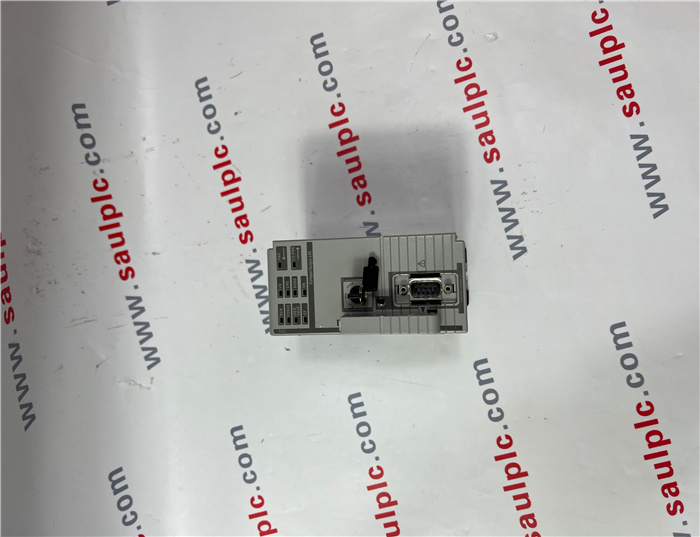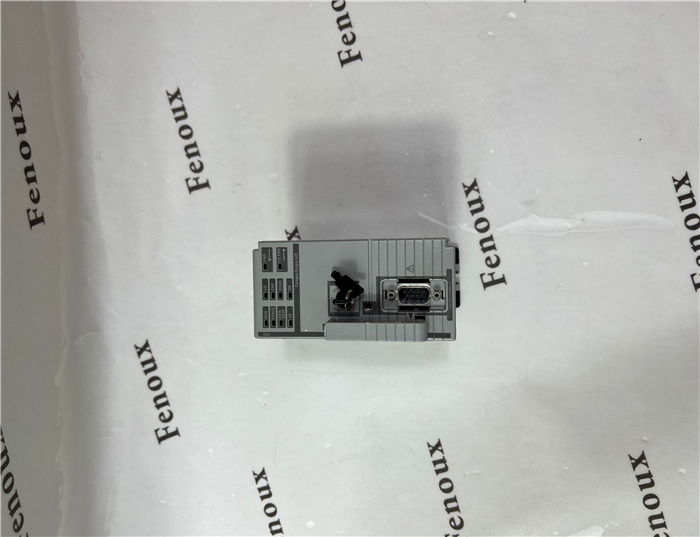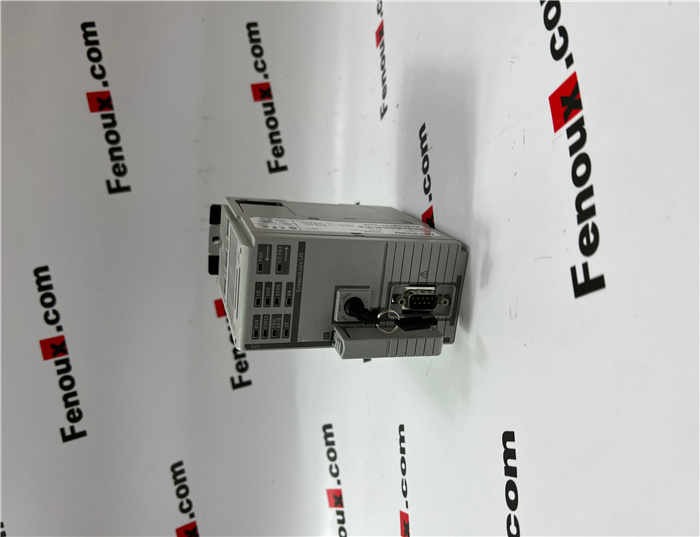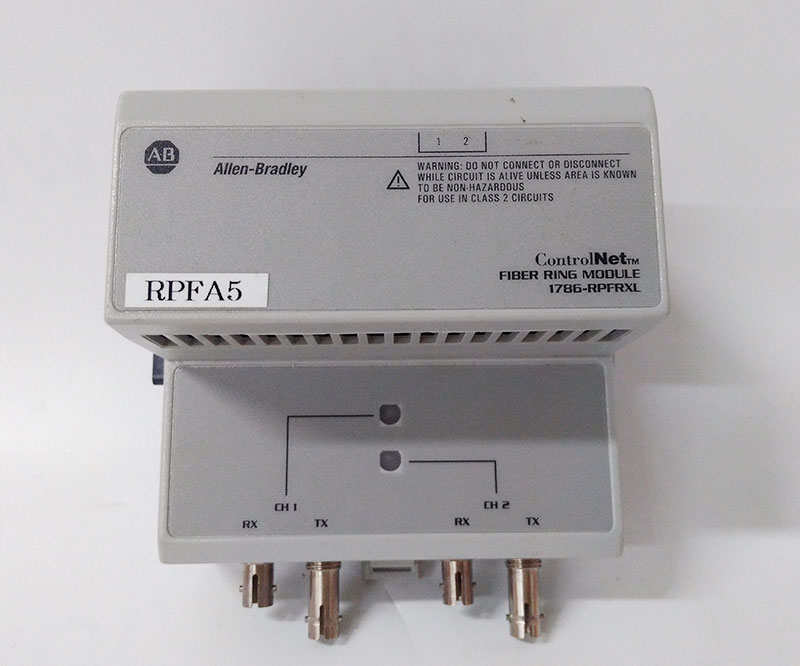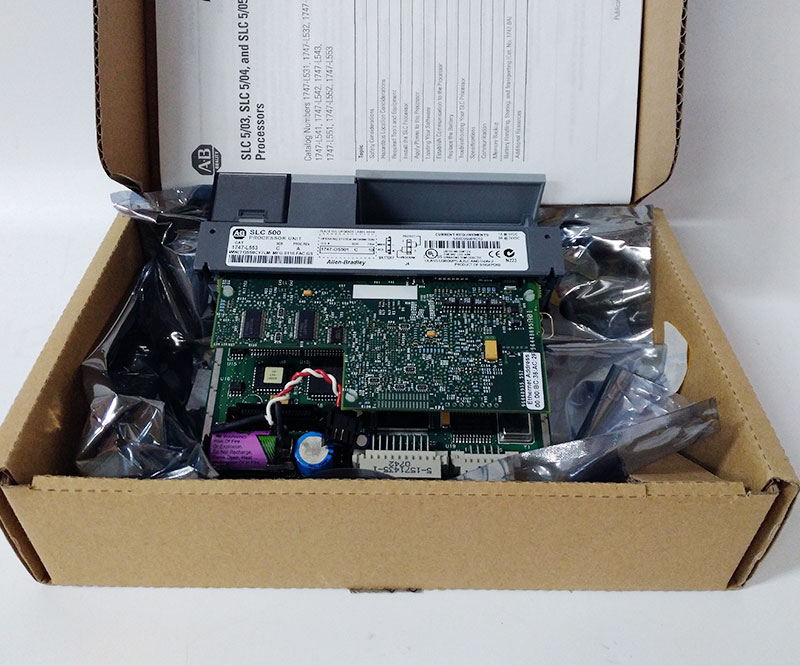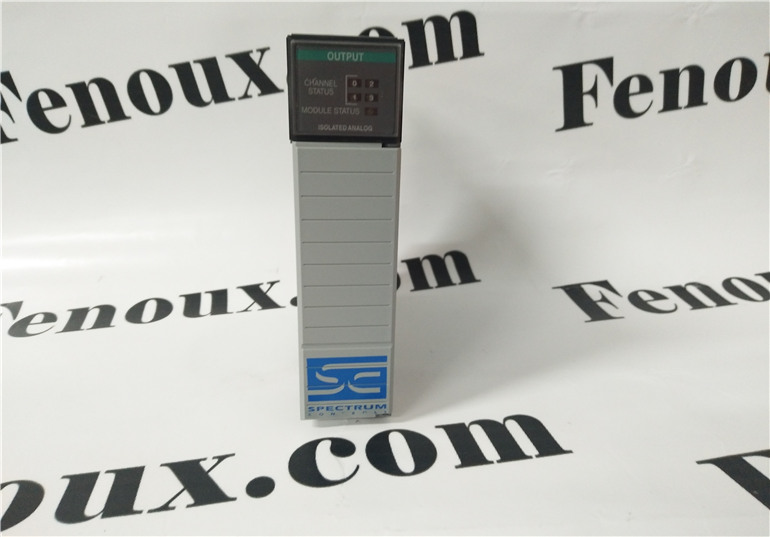Brand:Allen-Bradley
Model number:1768-L45
Colour:new
Warranty: 12 months
Lead Time:3-day working day
Country of origin: USA Price: Please contact us
Product weight:0.15kg
Shipping Port: Xiamen, China
Payment: Bank of Chicago, Bank of Singapore
Express cooperation: fedex, DHL, UPS and your express account
Service: Professional Sales provides 24 hours /7 days online service
Product Dimensions:
Enhancement Description Support for Series B Controllers This firmware revision supports the use of 1768 CompactLogix controllers, series B. Advanced Process Control Instructions Three new instructions targeted for process applications have been added. The new instructions are: • Internal Model Control (IMC) – Compares actual process error against error calculated by an internal first order lag plus deadtime model. • Coordinated Control (CC) – Controls a single process variable by manipulating as many as three different control variables. • Modular Multivariable Control (MMC) – Controls two process variables to their setpoints using up to three control variables. Instructions need to be purchased separately and licensed per use. The catalog numbers and associated use types are: • 9324-RLDAPCENE – provides a license to use the instructions in RSLogix 5000 and provides a license to use them in a single Logix controller. • 9324-RLDAPCCLENE - provides a license to use the instructions in an additional controller, pay-to-deploy. Runtime Partial Import You can now import programs, equipment phases, routines, rungs, and new Add-On Instructions into a running system. You can add these new components, as well as replace existing programs, equipment phases, and routines, while the system is running. New tags and User-Defined Types will be created as needed with values initialized from the import file. Data values of existing tags will be maintained. Kinetix® 6000 Advanced Safety Drive (S1) Support Version 17 provides support for the Kinetix 6000 Sercos S1 Advanced Safety based family of drives. The safety status can be directly accessed by the user’s application via two new sercos Axis attributes (GuardStatus and GuardFaults) in the Axis_Servo_Drive data type. The configuration of the S1 Drive’s safety parameters is done via an Ethernet WEB based interface and downloaded to the Kinetix 6000 drive via this Ethernet connection. Kinetix 6000 Enhanced Safe Torque-off Drive (S0) Support Version 17 provides support for the Kinetix 6000 sercos S0 Enhanced Safety based family of drives. The safety status can be directly accessed by the user’s application via a bit attribute (SafeOff) in the Axis_Servo_Drive data type. Pause Management for Step Timer ACC The Logix5000 timers store a portion of the wall clock with each scan and compare this to the value from the last scan. The timer’s ACC value is updated by the difference. Previous to version 17, when a Sequential Function Chart (SFC) routine was paused and then released, all of the step timers jumped forward by the length of the pause time. Version 17 now provides an option to control how the step timers will treat the pause – ignore it or count the pause time. Reading SFC Chart Paused State via GSV Instruction With version 17 of RSLogix 5000 software, the paused state of a Sequential Function Chart can be determined programmatically using the Get System Variable (GSV) instruction. Produced/Consumed Tag Structures Status With version 17 of RSLogix 5000 software, status information can be included with produced and consumed tags. In order to take advantage of this enhancement, the Produced/Consumed tag will need to be a User Defined Type (UDT) with the first member being of data type CONNECTION_STATUS.(1) Added Extended Error Codes for MAOC Cam & Compensation array errors. For Error Codes 36 and 37, new Extended Error Codes are available for Output Cam array and Output Compensation array errors. The Extended Error Codes describe errors that may occur because the element is incorrectly configured or the value of one of its members is out of range. Support of Programmable Jerk for Multi-Axis Coordinated Move Instructions Support for programmable jerk has been extended to the multi-axis move instructions, that is, MCCM, MCLM, MCCD and MCS. You are now able to specify acceleration and deceleration jerk rates for the multi-axis coordinated moves directly via operands in the instruction faceplate for S-Curve profile motion for these instructions. The configurable maximum jerk rates are also accessible programmatically via the Get System Variable (GSV) and the Set System Variable (SSV) instructions. For project conversions, the new Jerk Operands are pre-populated in the MCLM, MCCM, MCCD and MCS instructions with default values for Jerk rate as 100% of time. Support for Programmable Jerk for Single-Axis Change Dynamics Instruction (MCD) The MCD instruction is used to Change the Speed, Acceleration and Deceleration of a running Single Axis Motion. Now with the Programmable Jerk, you can specify the Accel and Decel Jerk for S-Curve Profiles. Added ability to apply change dynamics to Active and Pending Motion A new enumeration, that is Active and Pending Motion, has been added to the Scope variable of the MCCD instruction. Choosing Active and Pending Motion specifies that the changes affect the motion dynamics of the active coordinated motion instruction and any pending coordinated motion instruction in the queue.
A Digital Alarm (ALMD) configured to trigger when the input condition of the alarm is false does not trigger if the alarm condition is false when you conduct a download or return to Run mode. When the Condition parameter of the ALMD instruction is not set (that is, Input = 0) and either the program has recently been downloaded to the controller, or the controller has been changed from Run to Program and back to Run mode, the alarm is not activated (that is, the InAlarm bit is not set). These behaviors may result, depending on your application: • Programming designed to respond to the activated alarm is not executed. • Messages designed to be indicated at the operator station in response to the activated alarm are not indicated. • The alarm’s history log does not indicate that the alarm was activated. If you choose not to upgrade to this revision, you must toggle the Condition parameter from set (that is, Input = 1) to not set (that is, Input = 0) to activate the alarm. If your Condition parameter is set, then the alarm activates as expected after you download or change the controller mode. Lgx000104435 Online edits result in major non-recoverable faults (MNRFs). Causes of this anomaly include: • a controller that was or is near its limits in memory. • doing many online edits (tag additions and deletions) without downloading again. • using RSLinx Enterprise software (CPR9). When this anomaly occurs, the controller generates a major non-recoverable fault during an online edit (tag additions and deletions). I/O goes to their configured safe state, and the user application is cleared from memory. At this point, a Code 1 Type 60 or 61 major fault will be logged in the controller. This requires you to download the application again. When online edits are made to a controller, RSLinx Enterprise software (CPR9) monitors them. When a large number of edits are made to a controller, RSLinx Enterprise software (CPR9) re-optimizes communication to the controller. Two anomalies in RSLinx Enterprise software (CPR9) are aggravating factors to this controller anomaly: • The algorithm used to determine if communication re-optimization is needed causes communication re-optimization to occur too often. • When the communication re-optimizations occur, the connections to the controller should close. However, these connections do not close. This causes the controller to orphan all information related tags on scan by RSLinx Enterprise software (CPR9). You must upgrade your controller firmware and apply RSLinx Enterprise patches. The RSLinx Enterprise patches reduce the likelihood of the controller faulting and remove the excessive memory consumption. The firmware upgrade eliminates the controller major non-recoverable faults caused by this anomaly. These RSLinx Enterprise patches are on the Rockwell Automation Knowledgebase, http://www.rockwellautomation.com/knowledgebase: • RSLinx Enterprise software version 5.00 CPR9, ID number 65818 • RSLinx Enterprise software version 5.17 CPR9 SR1, ID number 65819 • RSLinx Enterprise software version 5.20 CPR9 SR2, ID number 65820 Lgx00096513 Fault handlers can be defined at the controller and program scope levels. These fault handlers are typically used to handle major recoverable faults that can occur during runtime execution of an application due to programming errors.
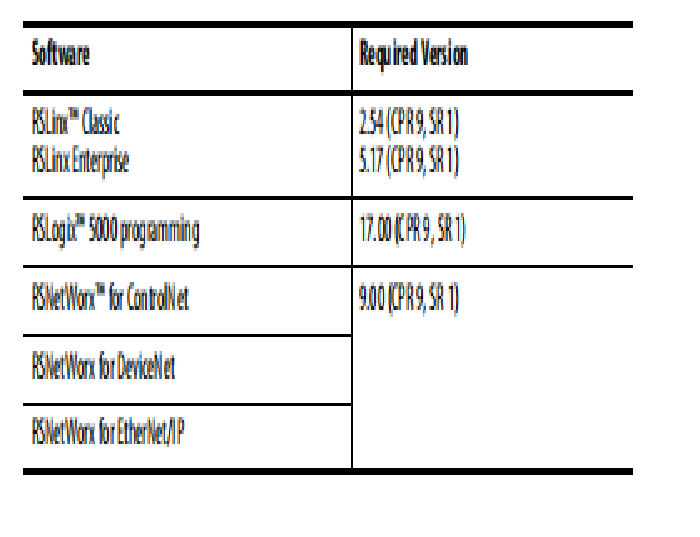
Shipping Port: Xiamen, China
Payment: Bank of Chicago, Bank of Singapore
Express cooperation: fedex, DHL, UPS and your express account
Service: Professional Sales provides 24 hours /7 days online service
Relevant models:
1734-EP24DCK
1769-PA4
1769-L35E
1761-CLB-HM02
1738-OB16EM12
1783-MS10T
1770-XYC
1771-OBN
1769-L32E-QBFC1B
1769-OB16P
1761-CBL
1738-EP24DC
1756-A17
1791-8AC
A-B 1783-MS10T
A-B 1769-OB32
2711P-T15C4D8
SST- PB3-SLC
1746-A4
1746-P2
1746-A13
1746-C9
1747-L553
1747-BA
1746-N I4
1746-OB32
1746-OB16
1746-IB32
1746-IB16
1745-HSCE
1746-A10


